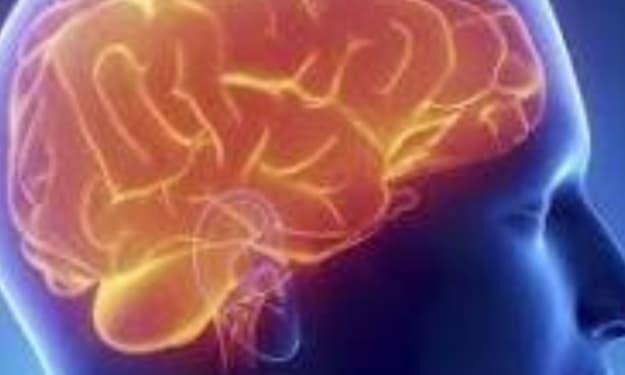The Adaptable City Within: Unveiling the Secrets of Cellular Adaptations
Exploring how cells respond to their environment for survival, health, and potential medical breakthroughs

The Remarkable Resilience of Cells: How They Adapt to Survive and Thrive
Cells, the fundamental building blocks of life, are constantly bombarded with challenges. From fluctuating oxygen levels to physical stress, they need to adapt to maintain function and survive. This article delves into the fascinating world of cellular adaptations, exploring the "why" and "how" behind these remarkable transformations.
The Balancing Act: Cell Proliferation, Differentiation, and Death
Imagine a bustling city. New buildings (cells) are constantly being constructed (proliferation) while older ones are demolished (cell death). This delicate balance is orchestrated by a trio of factors:
- Cell proliferation: This refers to the process of cell division, where one cell replicates to become two. Physiological cell proliferation is tightly regulated by chemical signals, such as growth factors, which act like permits for construction.
- Cell differentiation: As cells proliferate, they can specialize into distinct cell types with unique functions, like a skilled workforce taking on specific roles.
- Cell death by apoptosis: This is a programmed cell death that eliminates old or damaged cells, preventing them from becoming rogue elements that disrupt the city's (tissue's) harmony.
The interplay between these processes determines the size and function of a tissue. Increased cell proliferation or decreased cell death leads to more cells, while the opposite scenario results in fewer cells.
Stem Cells: The City's Unsung Heroes
Stem cells are like the city's architects. These unspecialized cells have the remarkable ability to both self-renew (indefinitely replicate) and differentiate into various specialized cell types. They are crucial for tissue repair and regeneration, ensuring the city can replace lost or damaged buildings.
Tissues are categorized based on their stem cell activity and ability to self-repair:
- Labile tissues (e.g., gut lining): Highly regenerative, with stem cells constantly dividing to replenish lost cells.
- Stable tissues (e.g., liver, bone): Have stem cells that are relatively dormant but can be activated for repair when needed.
- Permanent tissues (e.g., muscle, nerve): Have limited stem cell activity and poor regeneration capacity.
- When the City Needs to Adapt: Cellular Adaptations Explained
- Cells are not passive residents; they actively respond to environmental changes through adaptations. These adaptations are reversible, allowing the cell to return to normal once the stressor is removed. However, persistent stressors can overwhelm the cell, leading to injury or death.
Here are some key types of cellular adaptations:
- Regeneration: When tissue is damaged, regeneration involves replacing lost cells with identical ones, restoring the city's infrastructure. This process has varying degrees of success in different tissues.
- Hyperplasia: An increase in tissue size due to increased cell number, like adding new buildings to accommodate a growing population. This is typically seen in labile and stable tissues.
- Hypertrophy: An increase in tissue size due to increased cell size, like expanding existing buildings to create more space. This often occurs in response to increased functional demands or hormonal stimulation.
- Atrophy: A decrease in tissue size due to a reduction in cell size and/or number, like demolishing buildings in an underused area. This can be a normal response to decreased activity or a sign of disease.
- Metaplasia: A reversible change where one cell type transforms into another, better suited to the environment. Imagine adapting buildings for a new purpose, like converting an office into a residential space. Metaplasia typically occurs in epithelial tissues.
The Dark Side: When Adaptation Goes Wrong
While cellular adaptations are essential for survival, sometimes they can go awry. Dysplasia, for example, is the formation of abnormally differentiated cells. This change can be reversible, but with increasing severity, the risk of progression to cancer – the uncontrolled growth of abnormal cells – becomes higher.
Understanding cellular adaptations provides valuable insights into tissue function, regeneration, and disease development. By studying how cells adapt, scientists can develop strategies to promote healthy adaptations and prevent the development of diseases.
Conclusion
Cellular adaptations are a testament to the remarkable resilience of life. By understanding these processes, we gain a deeper appreciation for the intricate dance between cells and their environment. This knowledge empowers us to develop strategies for promoting health and combating disease, ensuring the continued vitality of the city within us.
About the Creator
suren arju
Hi there! I'm Suren, your startup guide. Entrepreneur, writer, dreamer - I share insights, tips & stories to fuel your startup journey. Ready to explore, learn & win together? Join me & let's redefine how we launch, learn & leap!
Enjoyed the story? Support the Creator.
Subscribe for free to receive all their stories in your feed. You could also pledge your support or give them a one-off tip, letting them know you appreciate their work.





Comments (1)
Wow, very well written!